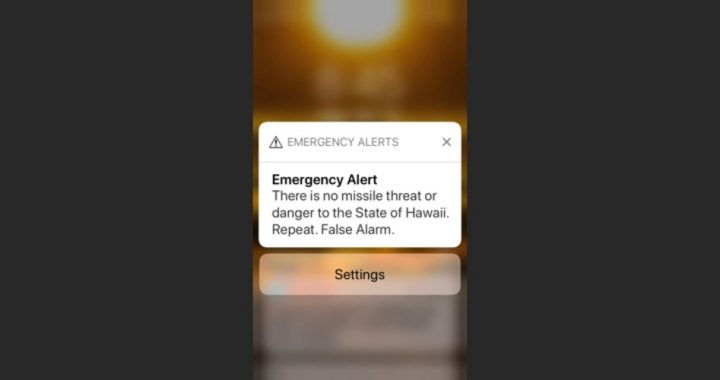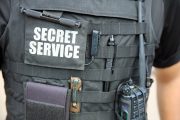
On Saturday morning, January 13, Hawaiians received on their cellphones and electronic devices the ultimate nightmare text message: “BALLISTIC MISSILE THREAT INBOUND TO HAWAII. SEEK IMMEDIATE SHELTER. THIS IS NOT A DRILL.” Loudspeakers began to issue warnings. A bright red chyron flashed across the top of television screens warning people to seek shelter, again interspersed with the ominous message, “This is not a drill.” Panicked people called loved ones to tell them they loved them one last time. Parents comforted frightened children. Motorists pulled to the side of the road, abandoned their vehicles, and sought shelter.
But it was all a mistake. No missile from North Korea, or anywhere else, was incoming. Somebody, it seemed, had simply goofed up. Vern Miyagi, a spokesman for Hawaii’s Emergency Management Agency, stated that an employee had “pushed the wrong button,” leading to the panic. The 38 minutes it took to repair the error was several minutes longer than it would have taken a missile to reach the Aloha State from North Korea.
The false alarm seems to be the product of human error and inadequate programming for the early-warning system. Once the false alarm was made, there was no template available to quickly rescind the alarm. According to Miyagi, such a template has now been created.
As of Monday, no one has been fired over the mistake that caused massive panic in Hawaii for almost 40 minutes. The technician who made the error has been reassigned. “This guy feels bad, right,” said Miyagi. “It was a mistake on his part and he feels terrible about it.”
Three minutes after the false alarm went out, the U.S. Pacific Command informed the Hawaii State Adjutant Major General Joe Logan that no missiles were incoming. The Honolulu Police Department was notified immediately after that but, by that time, the panic had already begun.
The frightening event brings to mind memories of the Cold War and the fear that was always in the background back in those days. In 1983, a few weeks after the Soviets shot down Korean Airlines Flight 007, the Soviet Union’s early warning system issued a similar alert. In that case, catastrophe was averted by a quick-thinking Soviet Air Defense Force officer, Stanislav Petrov, who recognized the false alarm and quickly spread the word, narrowly averting a mistaken “retaliatory” attack.
And the 1983 incident was not the only nuclear close call. In October of 1960, radar in Thule, Greenland, mistakenly interpreted the rising of the moon over Norway as an incoming Soviet attack. In 1962, the Cuban Missile Crisis nearly caused the Soviet Submarine B-59 to launch a nuclear-tipped missile in response to being harassed by American destroyers. The Suez Crisis in 1956 also nearly resulted in a nuclear exchange due to erroneous reports of aircraft over Turkey.
With the rise of North Korea’s nuclear program, are we again on a Cold War footing? Certainly, Kim Jong-un does not have the resources that Stalin or Khrushchev had, but what he lacks in firepower, he makes up for in unpredictability. The North Korean leader’s actions and rhetoric are extremely troubling. At this point, as many of his missile tests are failures as successes, and nobody seems to know just how accurate the targeting systems are. Could the North Koreans even hit Hawaii with a missile? Could they hit Japan? Guam? California? No one really knows, and the unknown often causes as much fear as reality does.
Those of us of a certain age remember “Duck and Cover” drills in our elementary schools. Some of us even remember Bert the Turtle. We might have thought fallout shelters were a thing of the past, a curious memory relegated to history. But Kim Jong-un and the Hawaiian false alarm remind us that nuclear weapons still exist and are still a threat to our existence.
And what if a terrorist group such as ISIS or Hamas gets a hold of one of these weapons? Would they even think twice about using it against Washington or New York?
On Tuesday, a similar incident occurred in Japan, with public broadcaster NHK sending out a news alert saying that North Korea had launched a missile and that citizens should seek shelter. This alert was cancelled within five minutes, averting much of the panic that occurred in Hawaii.
Photo: AP Images




